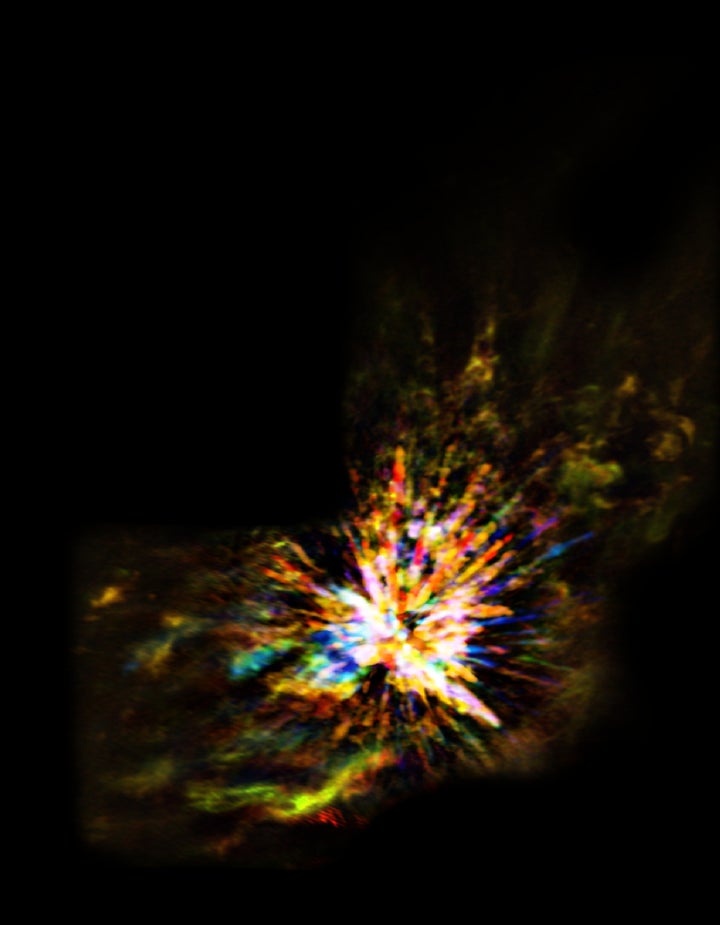Everything about space is huge.
From neutron stars so powerful that their gravity could distort every atom in your body to galactic collisions so great they can alter the fabric of spacetime.
So we hope you’ll believe us then when we say that this explosion, was huge.
Astronomers from the University of Colorado have managed to witness the moment when two young stars collided, creating a fireworks display the likes of which have never been seen before.

The astonishing image shows the moment when, some 500 years ago, two protostars collided deep within the Orion nebula.
Astronomers aren’t even sure if the stars fully collided or just grazed each other.
What they do know though is that the resulting explosion was so powerful that it sent other protostars and huge swathes of gas firing out into space at speeds of up to 150km per second.
To put that another way, the blast was so powerful that it produced as much energy in that one moment as our own Sun could produce in 10 million years.

The team, led by John Bally, believe that these events are relatively short-lived lasting only a few centuries. However they provide a deep insight into how a planet’s birth can be just as explosive as its death.
By destroying the planet’s own parent cloud these huge events could actually regulate the formation of new planets.
The astronomers were able to witness this incredible moment thanks to a vast complex known as the Atacama Large Millimeter/submillimeter Array (ALMA).
The array, located on the Chajnantor plateau in the Chilean Andes, is a collection of 66 high-precision antennas that can see light from some of the coldest sources in the universe.
It is the largest ground-based astronomical project in existence.
